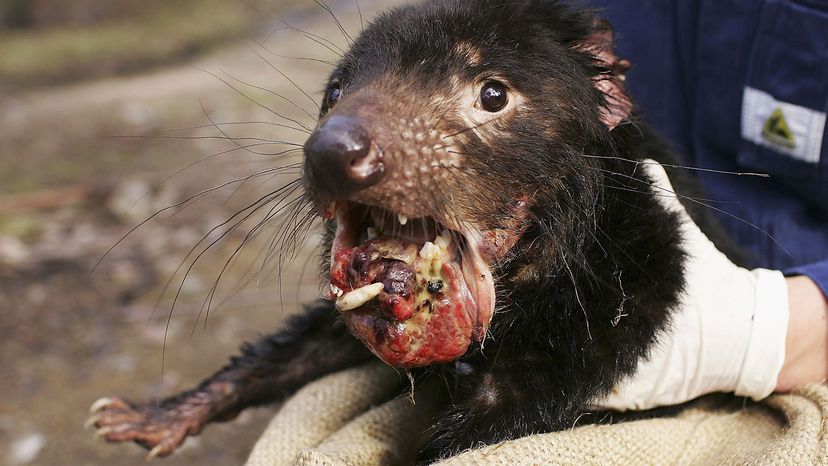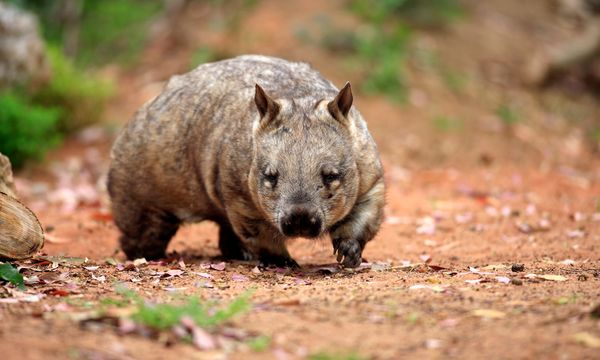
The continent of Australia features some of the most fascinating and unique creatures in the world. For all the bouncing kangaroos and cuddly-looking koalas, however, the Tasmanian devil delights not so much in appearance as it does in reputation. Despite the species' tendency for ferocity (what else would you expect from an apex predator?), no one wants to see it wiped off the face of the earth. In fact, much effort has been expended in recent decades to keep that from happening.
A few facts about these animals: Tasmanian devils used to be abundant in Tasmania and Australia, but about 500 years ago, they became extinct on the Australian mainland, probably due to dingoes. On Tasmania, the animals were considered a nuisance as they ate farmers' chickens and were nearly wiped out too, until they were protected by law in 1941.
Advertisement
Devils live in relative isolation, feasting on the dead flesh of kangaroos, wallabies, possums and even fellow devils. Although they're the world's largest carnivorous marsupials, adult males measure barely a foot tall (30 centimeters) and weigh up to 26 pounds (12 kilograms). In relation to their small body size, Tasmanian devils' jaws are more powerful than tigers', able to chew through entire bodies, including bone [source: National Geographic].
But it wasn't those champion chops that earned Tasmanian devils their villainous name. The story goes that European settlers who came to Tasmania in the 19th century were terrified by the nocturnal marsupial's piercing screams and thus christened them as devils. Indeed, Tasmanian devils are chatty creatures, with 11 distinct forms of vocalizations used to locate each other, defend themselves and communicate that they're peeved [source: Tasmanian Government].
Tasmanian devils are known for their belligerent nature. When irritated, their ears turn purple, and they release a loud shriek as a warning sign to back off. Their devil-eat-devil lifestyle begins at birth. Female Tasmanian devils produce litters of up to 40 tiny babies. But there are just four nipples inside of the mother's pouch, which means that only the strongest survive. After weaning the babies for a few months, the young devils must set out on their own, or risk being devoured by their mother. From there, they lead mostly solitary lives, except during mating season. And when adults encounter each other, it isn't a heartwarming reunion. Tasmanian devils fight each other readily, inflicting wounds – and sometimes death.
That innate urge to brawl has become an increasing threat to the livelihood of the species in the past two decades. The frequency of Tasmanian devil fighting hasn't risen, but the outcomes have turned far deadlier. Instead of a couple of nicks and scratches, a skirmish between two devils could leave behind a festering cancer known as Devil Facial Tumor Disease (DFTD).
DFTD, a contagious cancer introduced by feral cats, foxes and other pests, has raced across Tasmania at a swift pace, reaching all of the island state, except for the western and northwestern regions [source: University of Cambridge]. The typical lifecycle of DFTD begins with a showdown between two Tasmanian devils. If one of the animals is already infected with DFTD, a bite will deliver the virus into the other devil's healthy flesh. After that, the Tasmanian devil will develop the symptomatic facial tumors. As the tumors metastasize, they may destroy the devil's jaw and cause their teeth to deteriorate. Eventually, the animals lose their ability to eat and starve to death. This process takes place over a period of three months to a year. There is no treatment available for the disease.
There are two strains of DFTD: DFTD1 and DFTD2. DFTD1 is far more common and found throughout the country.
Once upon a time, experts believed that DFTD packed the potential to wipe out the entire Tasmanian population in a couple of decades. (The population had dropped from 140,000 to perhaps 20,000, over the last 25 years [source: National Geographic].) However, the species appears to be adapting, as many devils have developed infection resistance, helping to ease the decline significantly. Still, despite assurances by scientists that DFTD will not cause total extinction, the fact that it has eradicated fully 80 percent of the wild population keeps it a constant area of concern for Tasmanian devil enthusiasts [source: ScienceDaily].
Advertisement



